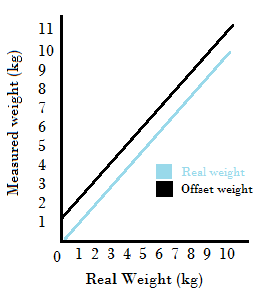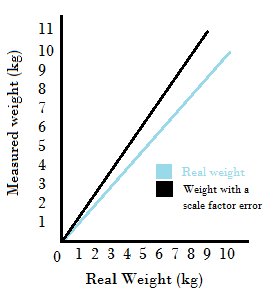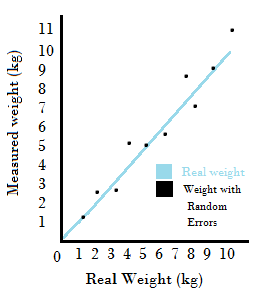What is Systematic Error?
Systematic error (also called systematic bias) is consistent, repeatable error associated with faulty equipment or a flawed experiment design.
What is Random Error?
Random error (also called unsystematic error, system noise or random variation) has no pattern. One minute your readings might be too small. The next they might be too large. You can’t predict random error and these errors are usually unavoidable.
Systematic vs. Random Errors
Systematic errors are usually caused by measuring instruments that are incorrectly calibrated or are used incorrectly. However, they can creep into your experiment from many sources, including:
- A worn out instrument. For example, a plastic tape measure becomes slightly stretched over the years, resulting in measurements that are slightly too high,
- An incorrectly calibrated or tared instrument, like a scale that doesn’t read zero when nothing is on it,
- A person consistently takes an incorrect measurement. For example, they might think the 3/4″ mark on a ruler is the 2/3″ mark.
The main differences between these two error types are:
- Random errors are (like the name suggests) completely random. They are unpredictable and can’t be replicated by repeating the experiment again.
- Systematic Errors produce consistent errors, either a fixed amount (like 1 lb) or a proportion (like 105% of the true value). If you repeat the experiment, you’ll get the same error.
Systematic errors are consistently in the same direction (e.g. they are always 50 g, 1% or 99 mm too large or too small). In contrast, random errors produce different values in random directions. For example, you use a scale to weigh yourself and get 148 lbs, 153 lbs, and 132 lbs.
Types of Systematic Error
1. Offset Error is a type of systematic error where the instrument isn’t set to zero when you start to weigh items. For example, a kitchen scale includes a “tare” button, which sets the scale and a container to zero before contents are placed in the container. This is so the weight of the container isn’t included in the readings. If the tare isn’t set properly, all readings will have offset error.

2. Scale Factor Errors. These are errors that are proportional to the true measurement. For example, a measuring tape stretched to 101% of its original size will consistently give results that are 101% of the true value.

Compare the above two error patterns with random errors, which have no pattern:

Preventing Errors
Random error can be reduced by:
- Using an average measurement from a set of measurements, or
- Increasing sample size.
It’s difficult to detect — and therefore prevent — systematic error. In order to avoid these types of error, know the limitations of your equipment and understand how the experiment works. This can help you identify areas that may be prone to systematic errors.
References
Gonick, L. (1993). The Cartoon Guide to Statistics. HarperPerennial.
Everitt, B. S.; Skrondal, A. (2010), The Cambridge Dictionary of Statistics, Cambridge University Press.
Kotz, S.; et al., eds. (2006), Encyclopedia of Statistical Sciences, Wiley.